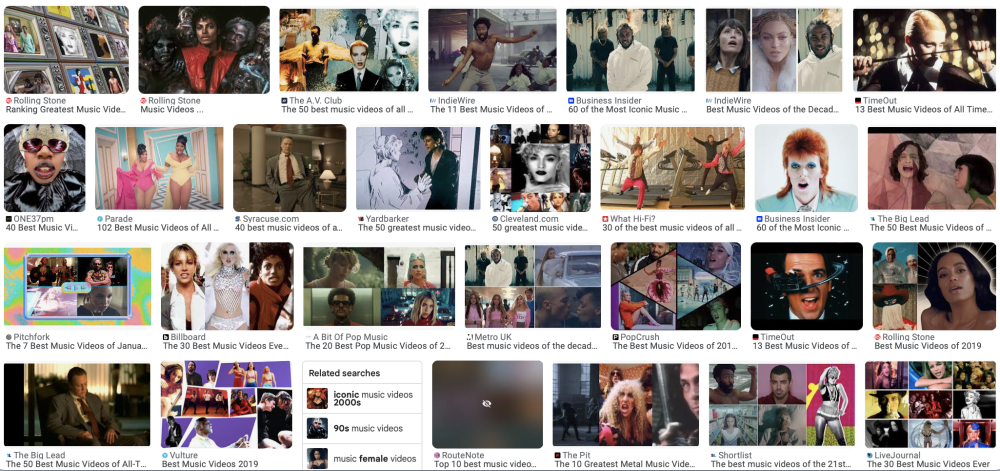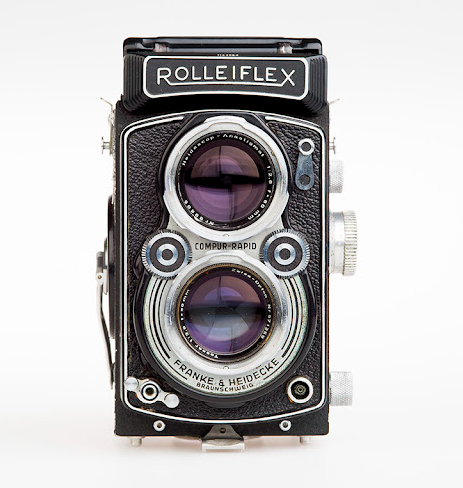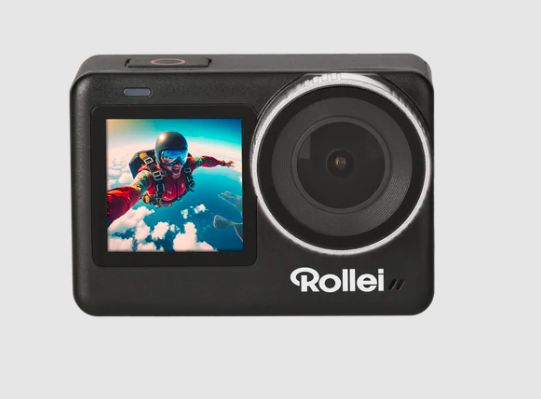Leaderboard
Popular Content
Showing content with the highest reputation on 01/25/2024 in all areas
-

World's smallest DSLM that shoots 4k?
John Matthews and one other reacted to Tim Sewell for a topic
Well this all went a bit stupid for me. After my last post in this thread I got myself a ZV-1F, the fixed focal length version, which would have been pretty ideal for my use case as I described it. To digress slightly, a friend of mine has her 30th birthday party this weekend, for which she and some other friends have formed a band - just for that one gig - and have been practising their set since August. I had offered to photograph this one-off gig for them, but they had already secured the services of her brother, a photography enthusiast, to do it. Anyway, saw her in the pub on Saturday and she asked if I could do it after all as her brother has - unsurprisingly - decided he'd rather just enjoy the evening. Fine. Except for the fact that I sold both my stills cameras in December to finance the FS7. So now I'm selling the ZV and have lashed out on a s/h A6600. Luckily I've got a bunch of stuff on eBay right now, so I can swallow the cost. I have to say, though, I'm rather liking the A6600. I know it's had a lot of knocks, not leat on this forum, for the dated sensor, RS etc; but bearing those deficiencies in mind it actually works pretty nicely. The AF (even on my adapted Canon lenses) is excellent, the IBIS is great and from the few video clips I've done it seems it will intercut with the FS7 footage just fine, despite only being 8 bit. It will also, obviously, also fulfil my needs for the festival film that first caused me to chime in on the thread. So much for a no-gear 2024!2 points -
I'd just go with a used S1H which are fantastic value now. Unless you absolutely must have exceptional forward tracking AF and/or full frame 50/60p, it's an exceptional piece of kit that is a joy to use with stellar output.2 points
-

Panasonic S5 II (What does Panasonic have up their sleeve?)
Mark Romero 2 and one other reacted to kye for a topic
One downside I can think of is how long the OLPF might last? The ones that people put into their OG BMPCCs have some sort of problem - IIRC they go foggy? Anyway, people are always talking online about replacing them. It might just be isolated to that time-period or manufacturer, but something to look into. Otherwise, yeah, why not.2 points -
Hey, check out this little music video i shot on the Sony a74 with the helios 44 and sigma 18-35. Helios for Run&Gun - not sure i can recommend. Also did not manage to create the swirley bokeh so far. On the other hand it takes the digital edge of the sony footage which helped tremendously. In the night scenes we also used the Tiffen Black Promist Filter 1/8. I realized i definetely need to learn more about lighting. If you can recommend any youtube channels i would be very happy. Of course i would also be happy about general feedback - and the artist would be happy if you would like or comment on youtube...1 point
-
Thanks for noting that. The quick twenty-minute look did reveal some of those issues, mostly due to condensation between the filter and sensor separated by rubber gasket and, for an unlucky few, the development of mold. This is also for a camera/filter situation that people were installing in the uncontrolled comfort of their own homes! Not seeing much beyond the BMPCC's, but it does prompt me to ask about this, get more clarity on their application of the OLPF, their expectations of durability, etc. Thanks for the thought, but is your suggestion simply based upon the S1H's current low cost? Fundamentally, there is no difference in output between the S1 and the S1H with the S1's updated firmware, right? (I mean, I know that the answer is yes to that question.) There are some video-centric ergos that the S1H has which, sure, I'd prefer but they aren't worth a ton of coin. Texting with one guy who has had this done, this retro OLPF is seemingly more effective than that within the S1H. Link here. It kind of boils down to hassle as well as $$: 1) selling my S1, buying an S1H; selling my S5, buying a FujiX as a second cam, or 2) for the price of the S1H, I could do this convert to the S1 and buy a Fuji X-S20 (possibly a used H2s?); sell the S5. Option 2 feels so much more efficient and that means something these days. Appreciate you both for chiming in.1 point
-
Cool video, and nice use of a projector as light-source. In terms of more normal narrative lighting, I highly recommend the WanderingDP YT channel for cinematography breakdowns, mostly from advertising but also some features. He talks about the whole topic of cinematography, but mostly concentrates on camera placement in the environment, location design, lighting, blocking, etc all together because they interact, but the focus is on the light, which is why I mention it in response to your question. Moving into more interesting lighting for things like music videos, I don't have a specific recommendation, but a couple of thoughts that did occur to me are: Try to create more contrast Music videos are where you can push things, and you can push the colour grade as well as the production design. In the situations like the outside shots where production design is pretty limited, you can still push the contrast in post, you can push the saturation too (perhaps pushing only select hue ranges, and perhaps darkening them to fit the grittier vibe), and you can also do a split-toning effect (like having cooler shadows). All these will create more contrast in post. Try to create more variation in the frame This relies a bit more on equipment, but try having more sources of coloured light and really push the hues. Maybe grab a second projector and shine one on the talent and one on the background but having different colours. Try shining one on the talent from the left and one from the right. Another more general thought is to create a bit more variation in shots. This involves shooting more angles, so would take more time, so maybe it wasn't in the budget, but getting more angles would really help in the edit. Even if you could get the artist to do an additional run-through in each location and you just film it getting as many different angles as possible - high-angle, low angle, close-up, shot of their hands, focus on the background with them blurred in profile etc. Then you can find any interesting little moments in that one and put them over the top in the edit. In terms of inspiration, do a bunch of google image searches for inspiration, and save any images you like. This is the images for the search "great music videos": Lots of cool ideas in there. Remember good artists copy, great artists steal! Why don't you like the Helios for run-n-gun work?1 point
-

World's smallest DSLM that shoots 4k?
PannySVHS reacted to John Matthews for a topic
Well, it sounds like the GX880 has been discontinued, according digixo.com, the "smallest 4k DSLM camera with a proper shutter". I'm hoping for a non EVF replacement, but I know no one thinks it'll ever happen. If M43 has only become G9ii-sized cameras, Panasonic will have problems IMO.1 point -
GX85 compared to E-m1 ii
John Matthews reacted to ac6000cw for a topic
I've owned both (and the E-M1 iii, G80 and G9). 1. E-M1 ii is larger & heavier but has (for me) superb ergonomics and build quality. It's just a really nice camera to use. 2. E-M1 ii sound via the internal mics is way better than the GX85. It also has a mic input and headphone jack. 3. E-M1 ii 4k UHD is full sensor width (no crop) whereas the GX85 is cropped. 4. E-M1 ii has great battery life. 5. E-M1 ii IBIS is better than the GX85. If you are seriously considering the E-M1 ii and video C-AF and IBIS are important to you, think about the E-M1 iii instead if you can afford it - it has better video C-AF and a choice of IBIS settings (the +1 setting is almost tripod-level). Another cheap (used) alternative to the GX85 worth considering is the G80/G85 - same sensor in a larger body with better IBIS, larger battery and a mic input. Provided the size is OK for you, the G9 is superb value used, and easily beats any of the above cameras for video quality (it also supports 10-bit video and 4k 60p, which none of the others do). Here in the UK, the E-M1 ii and G9 cost about the same used.1 point -

OM SYSTEMS to announce OM-1II, 9-18mm II, and 150-600mm f/5.0-6.3 on Jan 30th
Andrew Reid reacted to BTM_Pix for a topic
To be fair, even Olympus themselves weren't interested in keeping Olympus cameras going anymore. Better to have been bought and transitioned this way by a company that was - at least in the current term - interested in producing them rather than it being bought strictly for the name and it then be used just as a brand stamp on a succession of low end OEM stuff. There are numerous examples of this in different industries but one example from photography is Rollei where that brand has gone from meaning this : To meaning this : With Olympus, we will now at least be spared that indignity and so it can be remembered for the cameras up to this point rather than being subsequently associated with a raft of shitty products.1 point -

OM SYSTEMS to announce OM-1II, 9-18mm II, and 150-600mm f/5.0-6.3 on Jan 30th
John Matthews reacted to MrSMW for a topic
Looks like a firmware upgrade and the final removal of the OLYMPUS brand name. The latter doesn’t make any real difference, it’s just white lettering at the end of day, but the internal changes are not very impressive. However, I do love this camera. I wish I could have kept it and made it work for me but the simple reality was my full frame Lumix was better for both video and stills. But the size, build, ergos etc were spot on and paired with some of their fast PRO primes and lenses such as the 75mm f1.8, a really great compact system. If I wasn’t shooting professionally, it would easily be my first pick. And of course it could (and is by some) used professionally, but I think for event work in lower light or after dark, it would be very hard to go to 4/3 after using FF for several years from an output POV. Probably the most perfect camera physically I have had in my hands. Along with Canon’s R3.1 point



